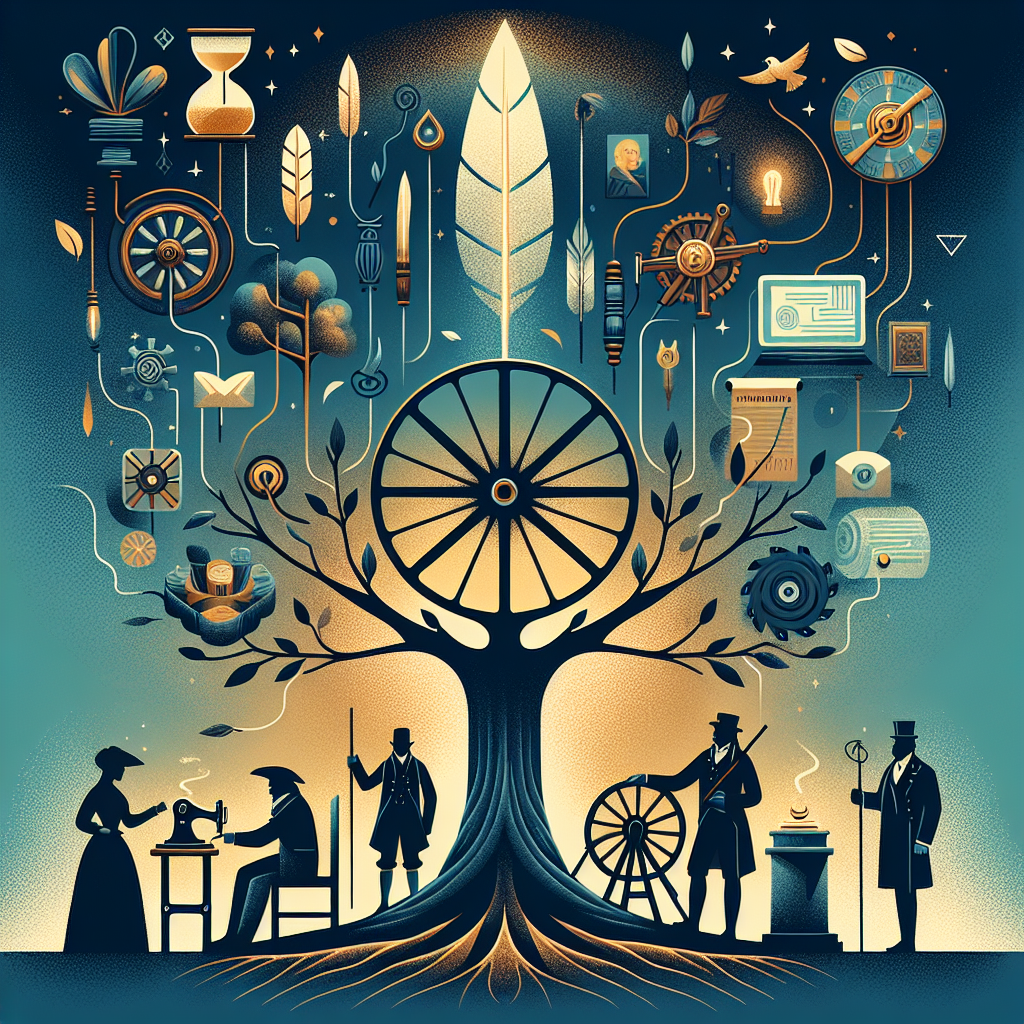Famous Historical Figures and Their Revolutionary Ideas
History is sprinkled with individuals whose groundbreaking ideas have dramatically altered the course of human events. From science to politics, these figures have pushed the boundaries of what was thought possible, leaving a lasting impact on the world. Let’s journey through time to explore the revolutionary ideas of some of the most influential historical figures. 🚀
Table of Contents
1. Introduction
2. Albert Einstein: The Theory of Relativity
3. Rosa Parks: The Power of Nonviolent Protest
4. Leonardo da Vinci: A Visionary of the Renaissance
5. Mahatma Gandhi: Champion of Peaceful Resistance
6. Ada Lovelace: The First Computer Programmer
7. Conclusion
8. FAQs
Introduction
Throughout history, certain individuals have stood out not just for their contributions but for their ability to think differently. Their revolutionary ideas have not only challenged existing norms but also paved new pathways for future generations. In this blog post, we’ll delve into the lives and ideas of five such extraordinary figures. 🌟
Albert Einstein: The Theory of Relativity
Albert Einstein, one of the most renowned physicists of the 20th century, introduced the world to the concept of relativity. His famous equation, E=mc², signifies the relationship between energy and mass, fundamentally changing our understanding of the universe. Before Einstein, Newtonian physics ruled the day, but Einstein’s work opened new frontiers in cosmology and quantum mechanics.
Einstein’s ideas were initially met with skepticism, yet his perseverance and intellectual brilliance ensured his theories eventually gained acceptance. His work not only revolutionized the field of physics but also influenced technology, leading to innovations like GPS and nuclear energy. 🛰️
Rosa Parks: The Power of Nonviolent Protest
Rosa Parks is often celebrated as the “Mother of the Civil Rights Movement” in the United States. Her courageous refusal to give up her seat to a white man on a Montgomery, Alabama bus in 1955 became a pivotal moment in American history. This act of defiance was not just about a bus seat; it was a powerful statement against racial segregation and injustice.
Parks’ actions sparked the Montgomery Bus Boycott, a significant chapter in the fight for civil rights. Her revolutionary idea was simple yet profound: standing up (or sitting down, in her case) for one’s rights through nonviolent means can lead to meaningful change. Her legacy continues to inspire countless individuals in the fight for equality and justice. ✊🏽
Leonardo da Vinci: A Visionary of the Renaissance
Leonardo da Vinci, the quintessential Renaissance man, was a painter, sculptor, engineer, and scientist. His revolutionary ideas spanned multiple disciplines, from art to engineering. Da Vinci’s curiosity and inventive mind led him to conceptualize inventions like the helicopter and the armored vehicle long before they were technologically feasible.
His detailed anatomical sketches and studies on human and animal physiology were groundbreaking for the time and laid the foundation for modern anatomy. Da Vinci’s art, including masterpieces like the Mona Lisa and The Last Supper, continues to captivate audiences worldwide, showcasing his unparalleled ability to blend science and creativity. 🎨
Mahatma Gandhi: Champion of Peaceful Resistance
Mahatma Gandhi’s idea of nonviolent resistance, or Satyagraha, became a powerful tool for political and social change. Gandhi believed in the power of truth and nonviolence as a means to fight oppression and injustice. His leadership in India’s struggle for independence from British rule demonstrated the effectiveness of peaceful protest.
Gandhi’s methods influenced numerous civil rights movements around the world, proving that revolutionary change is possible without resorting to violence. His philosophy of peace and tolerance continues to resonate, reminding us of the enduring power of moral courage and resilience. 🕊️
Ada Lovelace: The First Computer Programmer
Ada Lovelace, an English mathematician, is often credited as the world’s first computer programmer. In the mid-19th century, she worked on Charles Babbage’s Analytical Engine, a mechanical general-purpose computer. Lovelace’s notes on the engine include what is recognized as the first algorithm intended for implementation on a machine.
Her forward-thinking ideas anticipated the future of computing, recognizing that computers could do more than just calculations. Lovelace’s work laid the groundwork for the digital revolution, highlighting the crucial role of women in technology and innovation. 💻
Conclusion
The revolutionary ideas of these historical figures have left an indelible mark on the world, demonstrating the power of human ingenuity and vision. Their legacies continue to inspire us to think boldly, challenge the status quo, and strive for a better future. Whether in science, art, or social justice, these pioneers remind us that one idea can indeed change the world. 🌍
FAQs
Q: What makes an idea revolutionary?
A: A revolutionary idea is one that challenges existing norms, introduces new ways of thinking, and has the potential to significantly impact society or a particular field.
Q: How did these figures overcome skepticism?
A: Many of these figures faced skepticism due to their unconventional ideas. They succeeded through perseverance, support from like-minded individuals, and the undeniable impact and results of their work.
Q: Can one person really change the world?
A: Absolutely! History is full of examples of individuals whose ideas and actions have led to significant changes in society, proving that one person can indeed make a difference.





Leave a Reply
You must be logged in to post a comment.